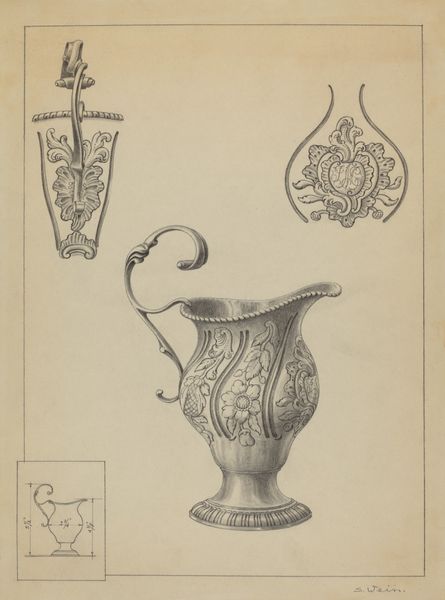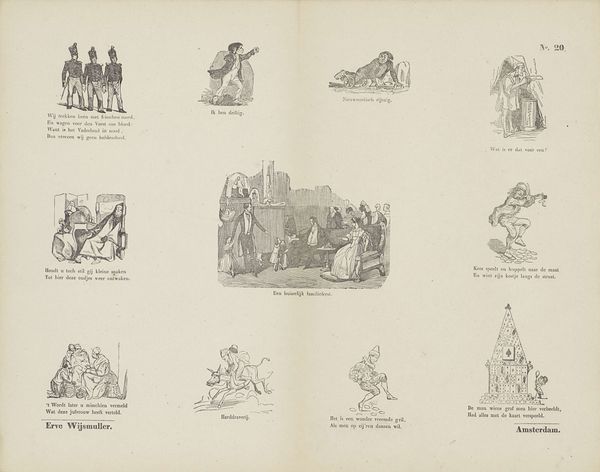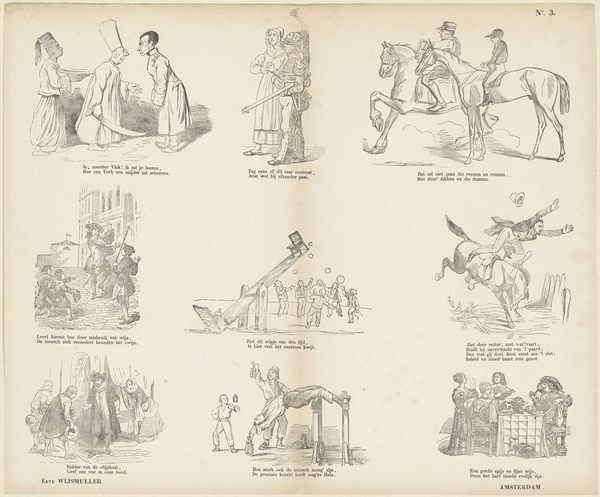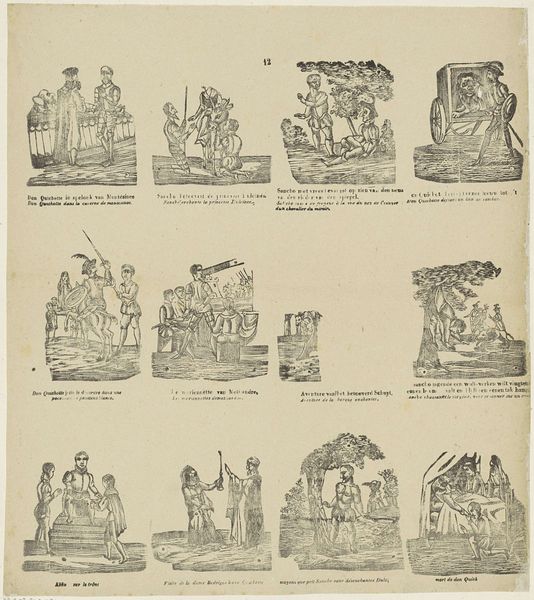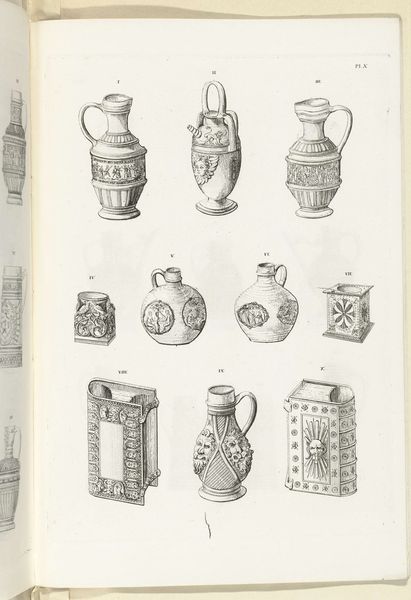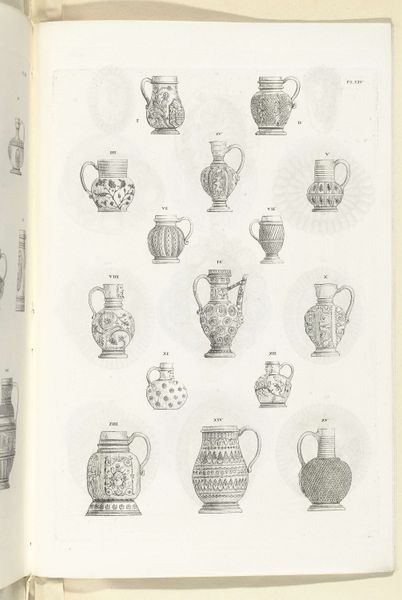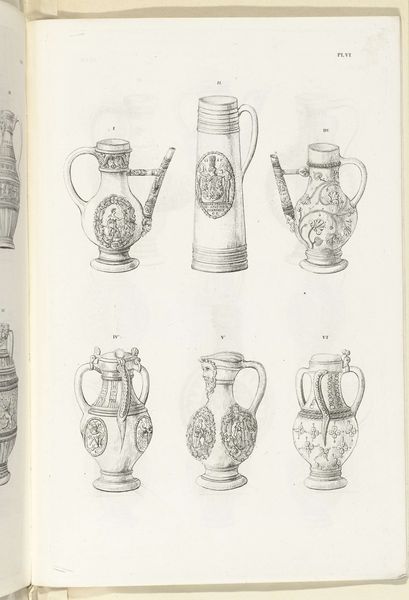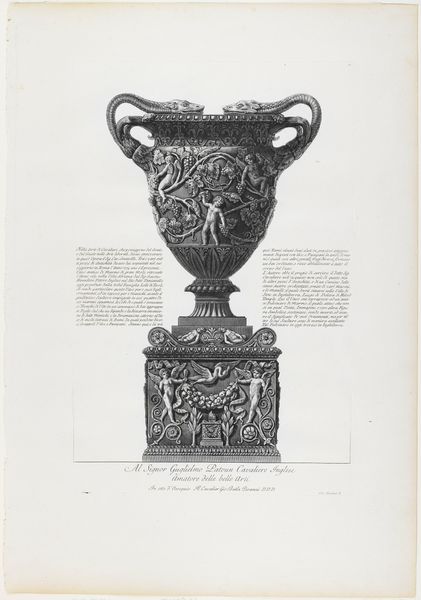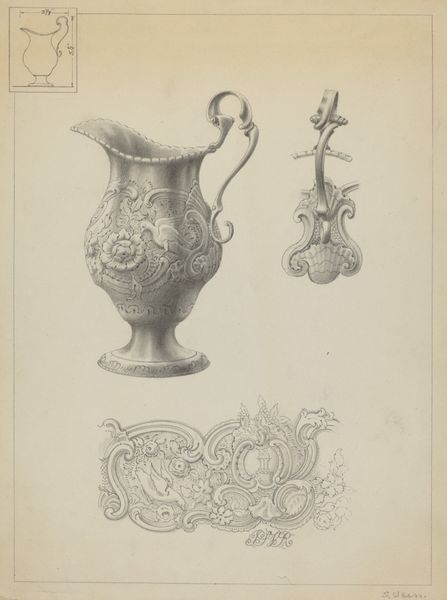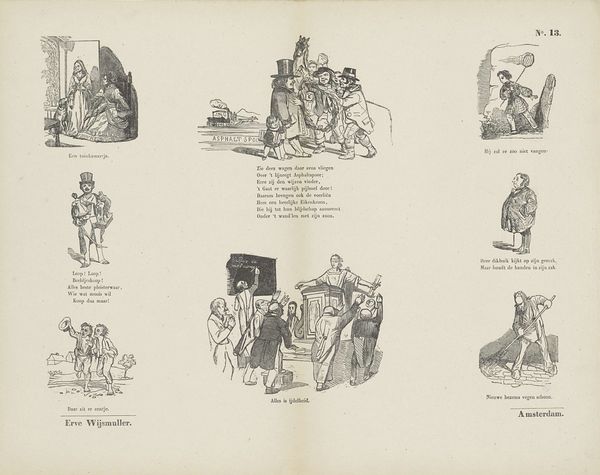
drawing, graphic-art, print, ink, engraving
#
drawing
#
graphic-art
#
light pencil work
#
quirky sketch
#
narrative-art
# print
#
figuration
#
personal sketchbook
#
ink
#
idea generation sketch
#
sketchwork
#
ink drawing experimentation
#
pen-ink sketch
#
sketchbook drawing
#
genre-painting
#
storyboard and sketchbook work
#
sketchbook art
#
engraving
Dimensions: height 420 mm, width 331 mm
Copyright: Rijks Museum: Open Domain
Curator: Albertus Willem Sijthoff’s "Rijm-prent," created sometime between 1861 and 1929, presents a fascinating compilation of small scenes and images. The Rijksmuseum houses this graphic artwork, a print made using engraving and other drawing techniques with ink. Editor: My first impression is of visual playfulness. The composition's arrangement reminds me of a carefully constructed puzzle, its diverse imagery inviting exploration. The stark ink lines create a sense of immediacy and accessibility. Curator: What do you make of these juxtapositions of figures and symbols; what socio-cultural stories do you see them telling? I'm drawn to the ways these images engage the contemporary understanding of class and racial hierarchies of that time. The depiction of a “Hottentot,” for instance, speaks to colonial attitudes and pseudo-scientific racism deeply embedded in that period. Editor: From a formal perspective, I'm captivated by the contrast between the detail in "pot," with its intricate ornamentation, and the minimalist lines of "gedoot," the pointing hand. This variation in rendering style keeps the eye engaged. The work uses stark tonal differences to draw the eye across the piece, even the placement of lettering to denote each sketch's referent creates a dynamic interplay between the verbal and the visual. Curator: Absolutely. Consider also how narrative-art emerges through sequencing. The juxtaposition of 'schavot', which pictures an execution, next to the landscape, titled "Grot", creates a narrative contrast between man-made cruelty and natural wonders, both suggesting different forms of entombment. This speaks volumes about justice and social commentary. Editor: I’d add that these miniature narratives aren't complete; they seem to function more as fragmented memories or sketches. The stark ink outlines create dynamic contrasts and give a strong structural underpinning across these vignettes. They offer the viewer a pathway to fill in their gaps, thus becoming active agents in co-creating the artwork. Curator: Indeed. And examining the cultural context, these images could have been aimed at disseminating popular stories of the day, mirroring what was going on with newspapers, but targeting children's literacy with a narrative device using accessible iconography, albeit now with troubling undercurrents, to simplify cultural concepts for mass consumption. Editor: I appreciate how this work bridges high and low art; it exists at the intersection of both popular entertainment and philosophical thought, creating new space. Curator: This image encourages reflection on art's capacity to both perpetuate and critique power dynamics, doesn't it? Editor: It highlights the importance of considering compositional qualities but also broader questions that give it context to unpack its full significance.
Comments
No comments
Be the first to comment and join the conversation on the ultimate creative platform.
